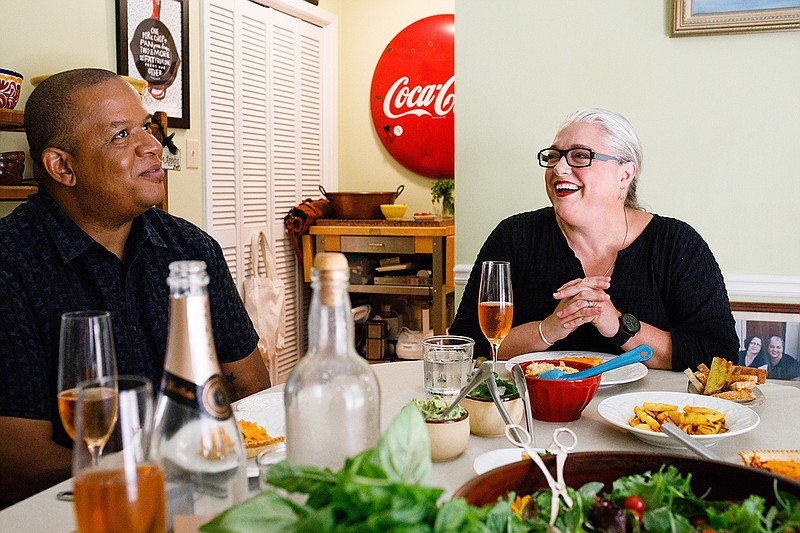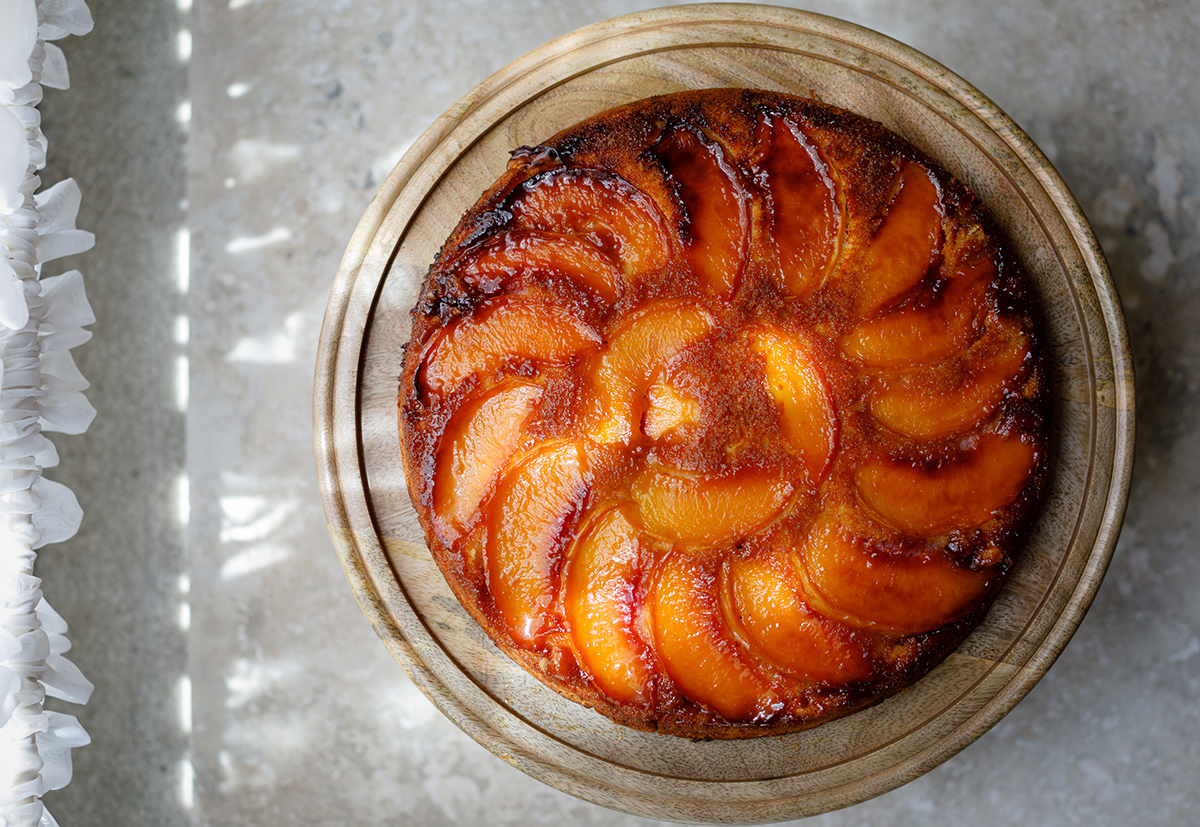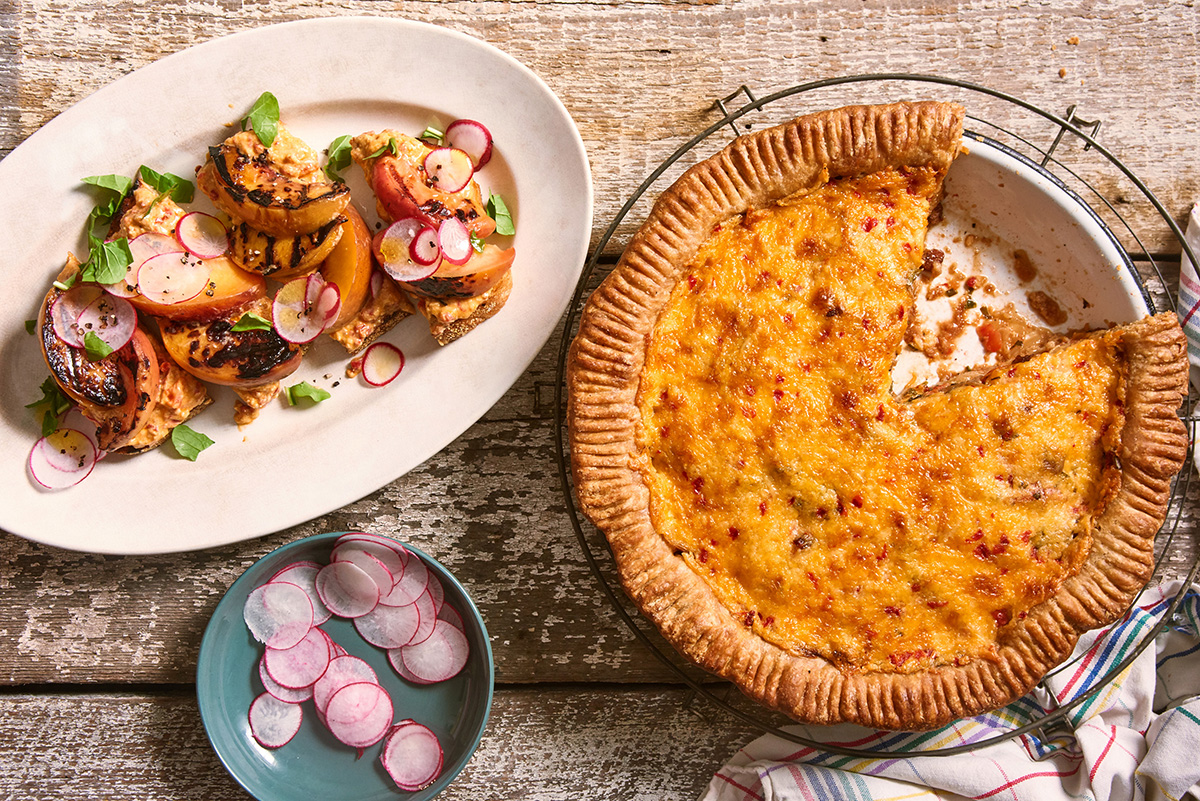ATLANTA - When you're a Southern cook, everyone thinks they know what you're about. You bake your cornbread in a cast-iron skillet. Your kitchen is stocked with grits and greens and grease. You're probably white or African-American, a churchgoer, a straight woman and a mother. And you learned at your own mother's apron strings, never wanting to cook anything other than the foods of your own tradition.
More and more Southern cooks are chipping away at that stereotype, both in who they are and what they cook. Two cooks based here - Todd Richards and Virginia Willis - have published cookbooks this year that reflect new ways of thinking about Southern food and the terms that have come to define it.
Richards, 47, is a self-taught chef with Southern roots; in "Soul: A Chef's Culinary Evolution in 150 Recipes," he describes his journey from Chicago, where he grew up, through a culinary career that began in the butcher department at a local Kroger supermarket, continued at the Four Seasons and Ritz-Carlton hotels, and now involves overseeing multiple restaurants here in Atlanta. His book is both a manual and meditation, in chapters moving alphabetically from collards to potatoes, on the forces of history that made him the cook that he is.
Willis, 51, is a Georgia native, taught the classics by her mother and grandmother, and polished by years spent cooking in France and working in food media in New York. As a gay woman, she felt she had to leave the South to explore her identity and came out only when she found her way into the professional food world.
"Secrets of the Southern Table: A Food Lover's Tour of the Global South" is her sixth book and her first to illuminate the diversity of Southern food: not only its African, Italian, French, Vietnamese, Mexican and other influences, but its agricultural range.
I brought them together for a conversation about this exciting and complicated time for people who love Southern cooking. The rest of the world is waking up to the multicultural reality of the New South: Korean-Southern fried chicken, Vietnamese-Cajun crawfish, tacos stuffed with barbecue. And new studies and discoveries by historians of African-American food like Toni Tipton-Martin, Adrian E. Miller and Therese Nelson are fueling debate over the origins of the Southern culinary tradition.
"There's a huge piece smack in the middle of the Southern food conversation, and that's the black-white divide," said Willis, putting the elephant in the room right on the lunch table.
So far, no one has managed to draw a clear line between white food and black food in the South. Many of the cooking traditions and techniques that define Southern food were invented and executed by African-Americans, whether they were cooking for their own families or for white families that enslaved or employed them.
"When you take a good look, it's mostly about class and place, not race. People who lived in the same region mostly ate the same food," according to what ingredients they could afford, Miller, the author of "Soul Food" and other books on African-American food history, said in an interview. "They weren't eating it together, but they were eating the same thing."
And yet, the term "soul food" came to represent the food of black Southerners, and "Southern" or "country" the food of white Southerners - even when the dishes were exactly the same. (According to Miller, the word "soul" was first used this way around the 1950s by black jazz musicians who wanted to distinguish their own music from the white copycats they encountered in places like Chicago and Detroit. "Soul music," "soul brother" and other terms followed.)
In the kitchen, there seems to be more that unites Willis and Richards than divides them. Both of their mothers washed fresh-picked peanuts and collard greens in the washing machine. Their family recipes for potato salad are nearly identical, with not-too-soft potatoes, hard-cooked eggs, pickle relish, mayonnaise, mustard and paprika.
Since it's not every day that I have two great Southern cooks coming to the table, I asked both to bring a variation on pimento cheese, a beloved sandwich filling from the dawn of convenience foods, made from shredded cheese, cream cheese, mayonnaise and canned pimentos. Willis assembled a savory, summery tomato pie and gave it a topping of melted pimento cheese; Richards made his pimento cheese smoky and spicy, adding thick-cut bacon and the sauce from a can of Mexican chipotle chilies and topping that with juicy sweet peaches on toast.
We started with iced tea, as you do in Georgia in July, but somehow also polished off a bottle of Champagne before dessert (upside-down peach cake). We reasoned that it would aid the conversation, which is excerpted below in condensed and edited form.
Q: To people outside the South, it's not always clear what the difference is - Southern food versus soul food.
Richards: First of all, Southern food isn't one thing. Louisiana isn't Georgia isn't the Carolinas.
Willis: The food of the South has changed and evolved more than people think. It's not stuck in one time or place.
Richards: And Southern kitchens had different influences over hundreds of years. There was fine dining, there were poor farmers, there were slave cooks.
Q: So is soul food a subset of Southern cooking or a separate thing?
Richards: Soul food is a marketing term invented by Northerners. It was the home food of the black Southerners who moved in the Great Migration. There weren't a lot of white people leaving the South to go live in Chicago or Detroit, so up North, it became black people's food.
Willis: Down here, I don't see the food being specifically black or white. It's more a question of who is doing the cooking. And that has a lot of complicated answers.
Richards: People get preoccupied with skin color. But it's really a question of poor and wealthy. Only poor people would eat neck bones and chitlins. Fresh meat like chicken and pork was always a luxury.
Willis: Fresh vegetables weren't a luxury; everyone had a garden, and the growing season is long. Across the South, it was an agrarian culture, for better or for worse.
Q: But why was that pursuit more vigorous in the South than in other places? It didn't seem to happen in New England. And it's not like Scandinavian food was revolutionized with flavor when people settled in the Midwest.
Willis: A lot of Southern cooking comes from just figuring out how to keep things from spoiling in the heat.
Richards: That strong flavor profile we have - the spice, the smoke, the heat - those didn't come from any English settlers. They were preservation methods that we know were used in Africa long before anyone ever landed in the state of Georgia. We are claiming barbecue as our own. We are claiming cayenne and hot peppers.
Willis: The pickles, the hams, the preserves - it was not a hobby. It was how you kept your family alive. It sounds very nice and pretty now to say "agrarian," but the dark side of that was poverty and hunger and backbreaking labor for the vast majority of people.
Richards: The good side was that people had real cooking technique. You had to know how to clean a fish or kill a squirrel. Your livelihood could depend on making a good biscuit. That isn't so different from what you learn in culinary school or studying French technique.
Q: So how did your families shape your sense of Southern food?
Willis: I learned to cook the classics a certain way from my mother and my grandmother, but even back then in the '70s, things were already changing. My mother was an adventurous cook. I went through a vegetarian phase. We had food magazines and food TV, so new stuff was coming in all the time.
Richards: Maybe because they lived outside the South, my parents liked to cook things just the way they remembered them. They cooked for 50 to 60 people at a time. My father was brining chickens all over the house before any chef started doing it, smoking racks of ribs. My grandmother made everything without a recipe: collards, cornbread, poundcake.
Q: Is that what defines soul food for you? The memory, the heritage? How do you preserve that into the future?
Richards: Soul food is a black art form. Soul food is a gospel, and chefs are its preachers. It can be handed down once you know it, and once you're proud of it.
Grilled Peach Toast With Spicy Pimento Cheese
Total time: About 30 minutes
Yield: 4 appetizer or 2 entrée servings
For the pimento cheese:
4 slices bacon
1 tablespoon olive oil
2 small red bell peppers, stems removed, finely diced (about 1 1/4 cups) or 1 cup diced canned pimentos
2 teaspoons adobo sauce from canned chipotle peppers
1/4 cup mayonnaise
1 tablespoon apple cider vinegar
2 teaspoons hot sauce, such as Tabasco or Crystal
1/2 teaspoon dry mustard
1/2 teaspoon granulated garlic, or use garlic powder
1/4 teaspoon coarsely ground black pepper
4 ounces cream cheese, softened
4 ounces white cheddar cheese, shredded (about 1 cup)
4 ounces sharp yellow cheddar cheese, shredded (about 1 cup)
2 tablespoons thinly sliced chives
To finish the dish:
2 large firm-ripe peaches, halved and pitted
3 tablespoons neutral oil, such as canola
4 large slices boule-style bread (1/2-inch thick), preferably multigrain
Extra-virgin olive oil
Flaky salt
Coarsely ground black pepper
1/4 cup thinly sliced red radishes (about 3 ounces, optional)
1 small bunch watercress, thick stems removed, or use arugula or curly mustard greens (optional)
Cook bacon in a heavy skillet over medium-high for 5 to 6 minutes or until just crisp (but not crunchy). Remove bacon from skillet and drain on paper towels; chop into coarse pieces. Reserve 1 tablespoon bacon drippings, and set aside. Wipe the skillet clean, but don't worry if there are brown bits stuck to the pan - they will loosen as you cook.
If using fresh peppers, return the skillet to medium heat. Add the oil and then the peppers and cook, stirring, until tender, 3 to 5 minutes. (If using canned pimentos, just add them to the clean skillet.)
Stir in the reserved bacon drippings. Add the adobo and cook for 2 minutes. Turn off the heat. Stir in the bacon, mayonnaise, vinegar, hot sauce, dry mustard, granulated garlic and black pepper. Let cool to room temperature.
In a large bowl or using a mixer fitted with the paddle attachment, mix the cream cheese until soft. Mix in the cheddar cheeses. Stir in bacon mixture and chives. Set aside. (Or refrigerate, covered, up to 4 days. Bring to cool room temperature for serving.)
Grill the peaches: Heat a grill to medium-high (450 degrees). Brush the peach halves with 1 tablespoon neutral oil, and place on the grates, cut sides down. Grill, uncovered, until grill marks appear and the juices begin to release, about 3 minutes. Remove from the grill, and slice each half into 4 to 6 wedges. Set aside.
Brush the bread slices on both sides with the remaining neutral oil, and place on the grill grates. Grill until the bread is toasted, 1 to 2 minutes per side. Remove from the grill.
Spread pimento cheese thickly on 1 side of each slice of toast. Cut each slice into 4 equal pieces, keeping them together to look like a whole slice. Top with sliced peaches. Drizzle the olive oil over the peaches, and sprinkle with salt and pepper. If using, top with radish slices and watercress leaves. Serve immediately.
- Recipe from Todd Richards
Tomato Pie With Pimento Cheese Topping
Total time: 1 1/2 hours, plus 1 hour chilling
Yield: 8 servings
For the crust:
2 cups all-purpose flour, more for flouring the work surface
1 teaspoon fine sea salt
4 ounces chilled unsalted butter (1 stick), cut into 1/2-inch cubes
2 large egg yolks
Ice water
For the filling:
1 1/2 pounds ripe tomatoes (about 3 medium)
Kosher salt
2 thick slices bacon, cut into lardons (large matchsticks), or 1 tablespoon olive oil
1 sweet onion, such as Vidalia or red onion, very thinly sliced
1/2 cup mixed chopped fresh herbs, such as chives, parsley and basil
Ground black pepper
1 1/4 cups grated sharp cheddar cheese (about 4 ounces)
1/3 cup mayonnaise
1 tablespoon diced pimentos (roasted, preserved sweet red peppers)
Make the dough: In a food processor fitted with the metal blade, combine the flour and salt. Add the butter. Process until the mixture resembles coarse cornmeal, 8 to 10 seconds. Add the egg yolks and pulse until just combined. Pulse in 5 to 6 tablespoons ice water, 1 tablespoon at a time, just until the mixture holds together as a soft dough, not crumbly or sticky. Use your hands to shape into a 1-inch-thick disk, wrap in plastic and refrigerate until firm, about 30 minutes (or longer, if desired).
Lightly flour a clean work surface and rolling pin. Unwrap and roll out the dough, starting in the center and rolling up to, but not over, the top edge of the dough. Return to the center, and roll down to, but not over, the bottom edge. Give the dough a quarter turn, and continue rolling, repeating the turns until you have a circle about 1/8-inch thick.
Transfer to a 9-inch pie pan, being careful not to stretch or pull the dough. Cut away any excess dough, leaving enough to make a thick edge around the rim. Tuck the edges under, press together and, if desired, crimp the edge. Chill until firm, at least 30 minutes.
Bake the crust: Heat oven to 425 degrees. Prick the bottom of the dough lightly all over with a fork. Line the dough with parchment paper and fill with pie weights, dried beans or uncooked rice, enough to come halfway up the sides of the pan. Bake for 20 minutes. Remove from the oven and remove the paper and weights. Set aside crust to cool to room temperature.
Meanwhile, line a rimmed baking sheet with paper towels. Using a serrated knife, core the tomatoes and slice them 1/4 inch thick. Place a layer of tomato slices on the baking sheet and sprinkle lightly with kosher salt. Top with more paper towels and repeat with remaining tomatoes. Set aside for at least 30 minutes.
If using bacon, place in a medium skillet over medium heat, and cook until just crisp, about 5 minutes. Drain on paper towels. Pour off all but about 1 tablespoon of the rendered fat from the pan (discard the fat or reserve it for another use). Or skip the bacon and start the next step with 1 tablespoon olive oil in the pan.
Heat the bacon fat or olive oil over medium heat, then add onions and a pinch of salt. Cook, stirring often, until lightly caramelized and golden brown, about 20 minutes. (Don't rush this process: The onions should not be white or crunchy.)
Assemble the pie: Heat oven to 350 degrees. Pat half the tomatoes dry with paper towels and arrange closely in the pie crust. Add half the onions, bacon and herbs. Season with salt and pepper. Repeat with remaining tomatoes, onions, bacon and herbs.
In a bowl, combine the cheese, mayonnaise and pimento very well. Gently spread the mixture on top of the pie. Bake for 30 minutes, or until lightly browned. Transfer to a wire rack to cool at least 30 minutes. Serve warm or at room temperature, slicing with a serrated knife.
- Recipe from Virginia Willis


